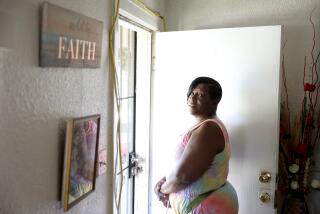Latchkey Dilemma
- Share via
School is out--at least for most. Children everywhere have been counting the days, and for them summer vacation is good news. But for parents of more than 600,000 California latchkey children, 200,000 of whom live in Los Angeles County, summer represents three months of frustration and worry. These parents juggle weekday employment with supervising children via frequent and sometimes frantic telephone calls. To many, especially the growing number of single parents, it is overwhelming.
Although child-care programs are expanding, for many middle- and low-income families they remain either unaffordable or unavailable. Those families’ children will spend this summer at home--some fearful, some fearless, but all of them alone.
California has made some progress in providing child care for latchkey children. But after a year in operation, the state government’s heralded latchkey program that targeted low- and middle-income families has missed its mark.
In part, the law itself is responsible. It required each day-care center to take half of its children from low-income families and half from families that could pay in full. The state subsidized the low-income children; higher-income families paid about $1.60 an hour. The program folded in children of welfare recipients who were studying or taking job training under the state workfare program, and many latchkey program sites were opened in low-income neighborhoods.
Response to the program from middle-income families has been poor--partly because eligible centers were inconvenient but largely because the cost that rises from $40 to $80 a week when school is out is prohibitive, especially for single parents. Furthermore, even if the program worked perfectly it would still leave 93% of low-income latchkey children without child care.
Assembly Ways and Means Committee Chairman John Vasconcellos (D-Santa Clara) plans to introduce amendments to the latchkey law to smooth out administrative conflicts, including the 50-50 enrollment restriction. The Legislature also is looking at more than 40 other child-care bills that range from granting tax credits to businesses that help with child care to new licensing standards for centers--all of which would help improve child care in California but none of which is likely to provide quick relief.
In the near term the best hope for expanding child care appears to lie in the combined hands of government, business and local leadership. The city of Lawndale, for example, provides a sterling example of the effectiveness of this coalition. Using both public and private resources, the city has a child-care program that is affordable (one-fourth the cost of state programs), self-supporting and widely available. By September, Lawndale expects to have five centers in operation--enough to meet all of the community’s child-care needs. Its success is due in part to such innovative approaches as meeting some staff needs with high-school students, who get credit for the hours that they put in.
The 600,000 latchkey children in California, a number that is bound to grow, represent a significant share of the future of this state. They can grow to be leaders or they can grow to be dependents on the state. A wise investment in child care--with responsibility shared by the state, business and local leaders--can tip the odds toward their being leaders.
More to Read
Sign up for Essential California
The most important California stories and recommendations in your inbox every morning.
You may occasionally receive promotional content from the Los Angeles Times.










